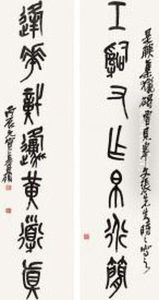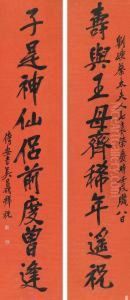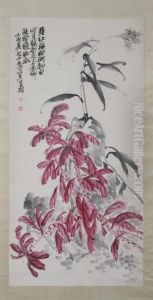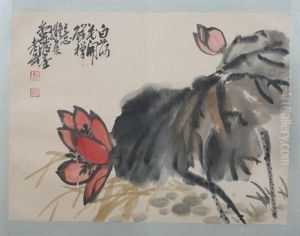Wu Chang Shuo Paintings
Wu Changshuo (Chinese: 吴昌硕) was a prominent painter, poet, and calligrapher during the late Qing Dynasty in China. Born on September 12, 1844, in Huzhou, Zhejiang Province, Wu was originally named Wu Junqing and later adopted the name Changshuo. He was also known by his courtesy name Youshan and several pseudonyms, including Liangqian and Baiyang Shanren.
Wu Changshuo began his artistic journey with a focus on poetry and calligraphy, embedding himself deeply in the literary traditions of the time. However, he is particularly renowned for his significant contributions to the art of seal carving, which he began to explore seriously in his mid-thirties. He revolutionized this art form by infusing it with a painterly approach, emphasizing expressiveness and boldness over the traditional emphasis on symmetry and precision.
Later in life, Wu Changshuo turned his attention to painting, excelling in the creation of flowers and plants, especially plum blossoms, chrysanthemums, and orchids, which are traditionally revered in Chinese culture for their symbolic meanings. His style was characterized by vigorous, spontaneous brushwork and a vivid use of color, which displayed a unique blend of traditional scholarly painting with the more expressive techniques often found in folk art and carving. Wu's paintings often carried an air of robustness and vitality, which was a departure from the more refined and delicate style of his literati predecessors.
Wu Changshuo's artistic philosophy was deeply influenced by the ancient masters, yet he was not bound by their conventions. His innovative approach laid the groundwork for the later development of the Shanghai School of painting, which brought together classical techniques and modern expressions. Throughout his career, he was also a mentor to many younger artists, including Pan Tianshou and Qi Baishi, who would become major figures in 20th-century Chinese art.
Wu Changshuo's impact on Chinese art was profound, and his works continue to be highly regarded and studied. He passed away on November 29, 1927, leaving behind a legacy that endures in the realms of painting, calligraphy, and seal engraving. His art is a testament to his belief in the importance of personal expression within the traditional Chinese aesthetic framework.








